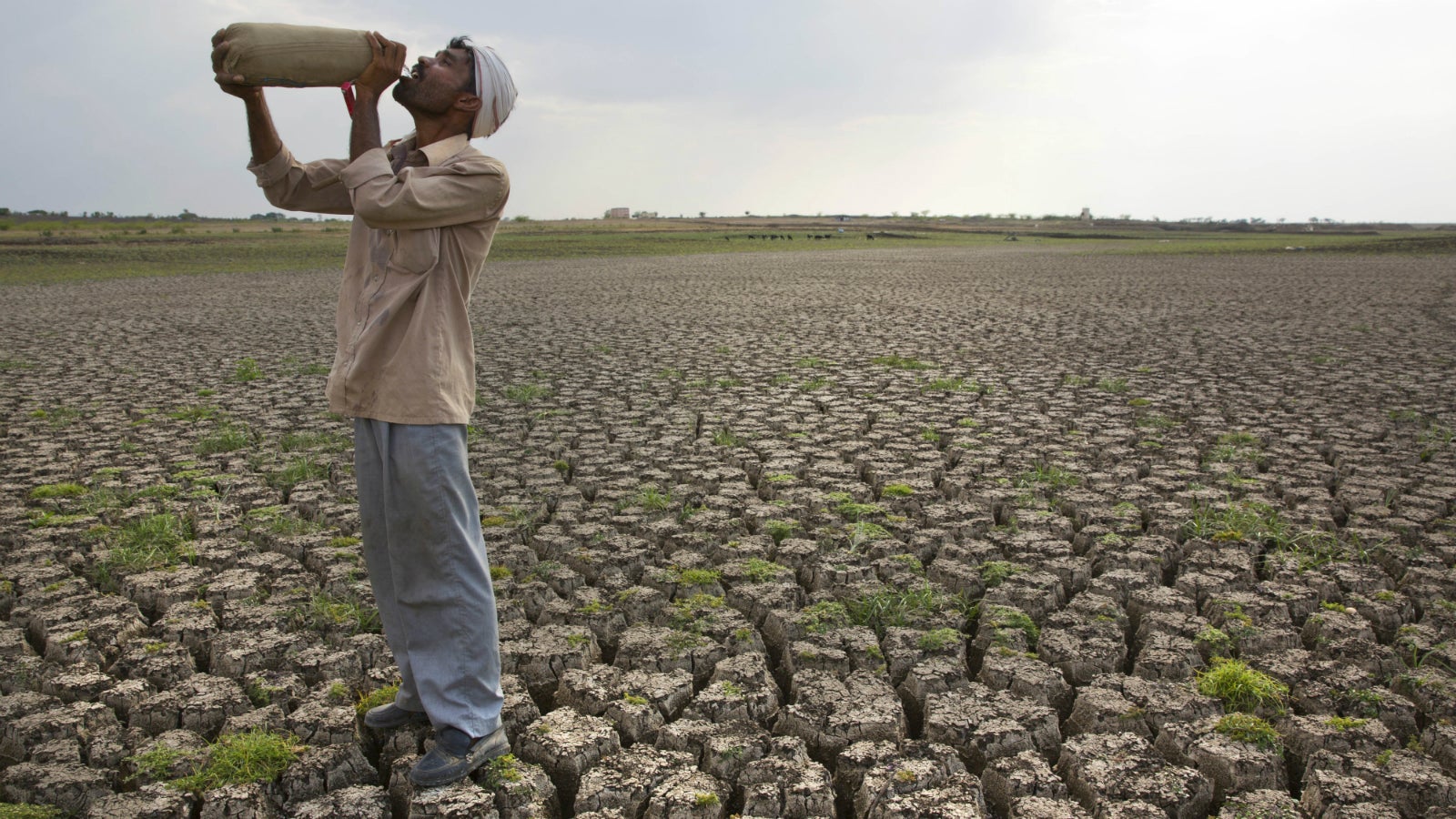As summer sets in, does India have enough water in store to make it through?
India is all set to have a sweltering summer this year.


India is all set to have a sweltering summer this year.
Public weather forecaster India Meteorological Department (IMD) has predicted that average temperatures will be a degree above normal in the country this summer. Large swathes could experience a heat wave, much like last year. In 2016, over 700 Indians died due to the heat and millions of others were affected in drought-hit regions.
This year, however, there is a silver lining: India’s water reserves are 122% higher than the previous year, according to the Central Water Commission, a body that monitors water levels in the country. As of March 16 (pdf), the live storage capacity at the 91 reservoirs across India stood at 58.03 billion cubic meters (BCM), which is about 37% of the total storage capacity of 157.799 BCM.
Last year, around this time, the live storage capacity stood at only 47.54 BCM, around 30% of the total capacity. This year, the water levels are marginally better than even the 10-year average of 57.8 BCM. Much of that is largely due to the normal rainfall India received in 2016, after two consecutive years of drought.
“The storage capacity data is no doubt quite impressive,” Sushmita Sengupta, the deputy programme manager at New Delhi-based Centre for Science and Environment, said.
Reservoir water is mostly used for irrigation during the summer and winter months, and for power generation.
This year, though, the southern states seem to be struggling. Water available at reservoirs in southern India stood at a bare 17% of the total capacity as of March 16. “The storage during the corresponding period of last year was 19% and average storage of last 10 years during corresponding period was 31%,” the CWC said in a report.
Of the 91 reservoirs in India, 59 have more water than last year. The better placed states include Punjab, Rajasthan, Jharkhand, Odisha, West Bengal, Gujarat, Maharashtra, Uttar Pradesh, Uttarakhand, Madhya Pradesh, Chhattisgarh, and Telangana.
However, CSE’s Sengupta sounds a cautionary note over surface water reserves. “What about the towns and cities depending on groundwater? The numbers are huge. There is huge extraction but no groundwater recharge policy in place. We all know that due to climate change, rain is unpredictable, so we should maximum the use of rainwater through decentralised and traditional systems.”